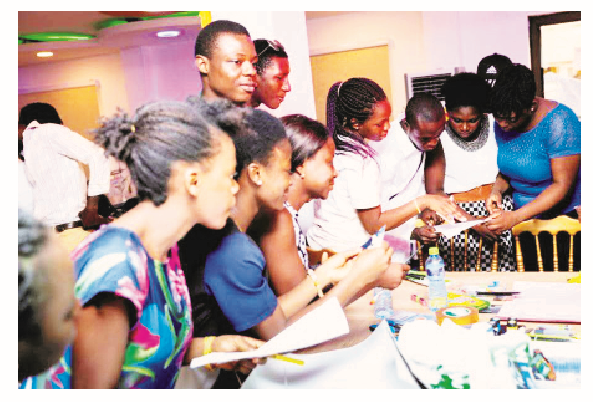Sewing has long been recognised as a powerful tool for empowerment, particularly, for women and youth. Not only does it provide a creative outlet and the ability to produce practical items, but it can also lead to economic independence and increased self-confidence.
In Nigeria, sewing skills are passed down from generation to generation, creating a sense of community and connection. Additionally, the act of sewing requires focus and attention to detail, which can be meditative and calming for the mind.
Being a fashion designer is already a rewarding career, but setting up a fashion school can be just as lucrative. By sharing your expertise and knowledge with aspiring designers, you not only contribute to the growth of the fashion industry but also open up opportunities for yourself to earn more income.
A fashion designer, Modupe Adejumo, who had her fashion training from Quality Fashion School, said she paid over N30,000 for her to be trained. “I paid like N30,000 to enroll in the fashion school. They also collect biscuits and drinks from my parents.”
Another fashion designer who had her training in Ilorin, the Kwara state capital, Blessing Oladipupo, paid N10,000 to enroll in the fashion academy, which was about nine years ago. “Fashion school fees has increased here in Ilorin. It is in the region of N60,000, as opposed to the N10,000 that I paid. And the students will also have to buy some tailoring items for their use.”
Profitability
As a fashion school, one can make between N30,000 and N450,000 income depending on what the school is offering. For instance, a fashion training centre in Ikeja charges N265,000, which covers registration fees, course fees, and training fees, which are three months for weekdays or four months for the weekend.
Starting A Fashion School
When considering the establishment of a fashion design school, several key factors must be taken into account. Firstly, it is crucial to identify the target audience and determine the level of education and training that will be provided. This will help in designing a curriculum that meets the needs of aspiring fashion designers.
Another important consideration is the location of the school. It should ideally be situated in an area with easy access to transportation and amenities, as well as being close to industry partners and potential employers. This can help students gain practical experience and network with professionals in the field.
Additionally, facilities such as classrooms, workshops, and equipment should be carefully selected and designed to meet the specific requirements of fashion design education. This may include specialized sewing machines, cutting tables, mannequins, computer-aided design software, and other tools necessary for teaching essential skills.
Staffing is another critical factor when setting up a fashion design school. Experienced teachers who have worked in the industry can provide valuable insights into current trends and practices. They can also offer mentorship and guidance to students as they develop their unique style.
We’ve got the edge. Get real-time reports, breaking scoops, and exclusive angles delivered straight to your phone. Don’t settle for stale news. Join LEADERSHIP NEWS on WhatsApp for 24/7 updates →
Join Our WhatsApp Channel











